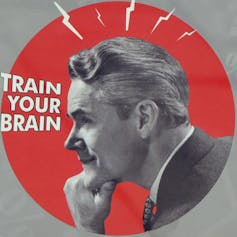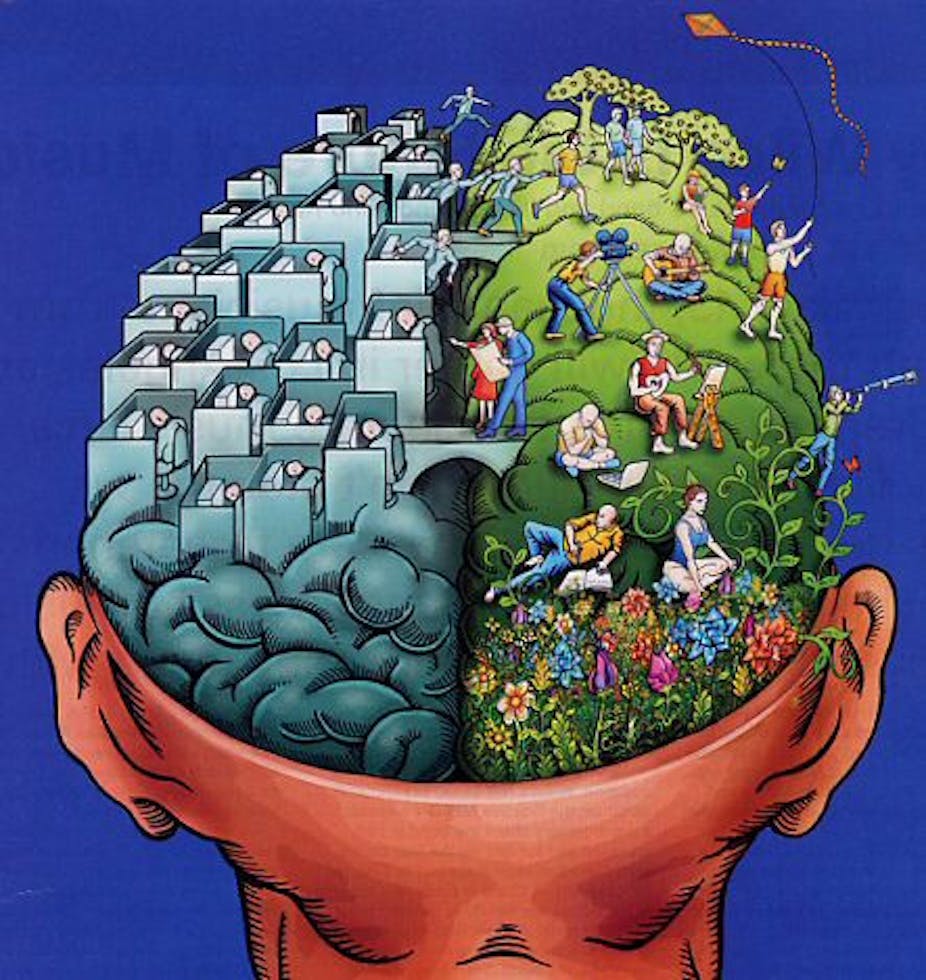When it comes to New Year’s resolutions, getting your body in shape often tops the list. But what about your brain?
If your left or right brain is feeling a little flabby, there’s a wide range of books, teaching programs, and even a Nintendo DS game, purporting to train your left and/or right brain. Indeed, if you Google “right brain training”, you’ll score 53,900,000 hits.
These products are based on the belief that the left and right hemispheres are polar opposites. The left brain is often characterised as your intelligent side: rational, logical and analytic. In contrast the right brain is stereotyped as the “touchy-feely” hemisphere, viewed as artistic, creative, and emotive.

Such left and right brain stereotypes have led theorists to suggest that people can be classified according to their “hemisphericity”. If you’re a logical, rational scientist, for instance, you’re left-brained. But creative types, from artists to writers, are right-brained.
Being left-brained or right-brained often pops up in popular culture. In the business world, “left-brainers” are complimented on their logical approach, and right-brained is synonymous with being creative/emotive.
But although the notion of “hemisphericity” has captured the popular imagination, it is not supported by neuroscientific research.
Everyone, from winners of the Nobel Prize in physics to the artists behind the Archibald Prize, uses both sides of the brain when performing any task. In fact, the idea that people can be classified as left- or right-brained was debunked in scientific literature in the 1980s.
Despite this, left/right-brain training programs appear to be gaining popularity. This is puzzling because there’s no evidence indicating that you can train just one side of your brain. Such attempts are doomed because the two hemispheres are heavily interconnected and constantly communicating.
In a normal brain, the left and right sides are connected by a band of some 250 million nerve fibres (known as the the corpus callosum). And information transfer across the corpus callosum is extremely efficient.
If I show a picture to just the right brain (easily done using computer-based techniques), that information is transmitted to the left brain within 20 milliseconds (i.e. two hundredths of a second)!
The corpus callosum allows virtually instant communication between the two halves of a normal brain. This means the whole brain is involved in processing, no matter how analytic or artistic the task.

Only patients who’ve had their corpus callosum surgically severed can process information within just one hemisphere. This rare operation is used to relieve severe epilepsy in people who are not responding to drugs. But in a normal brain, you cannot restrict information to one hemisphere, no matter how hard you try.
New neuroscience techniques, such as Diffusion Tensor Imaging (DTI), have been specifically designed to show connections between different regions of the brain. Research using such techniques indicates that both sides of your brain are involved in everything you do.
Whether you’re working on trigonometry, playing the ukulele, or taking part in “right-brain” training, both your left and right brain are simultaneously processing and integrating information.
So try as you might, it just isn’t possible for someone with a normal brain to selectively use just one hemisphere. And at present there’s no independent evidence validating the claims of the programs, educational tools, and books claiming to selectively activate the right (or left) brain.
Until such evidence is available, trying to train just one side of your brain really is simply half-witted.

